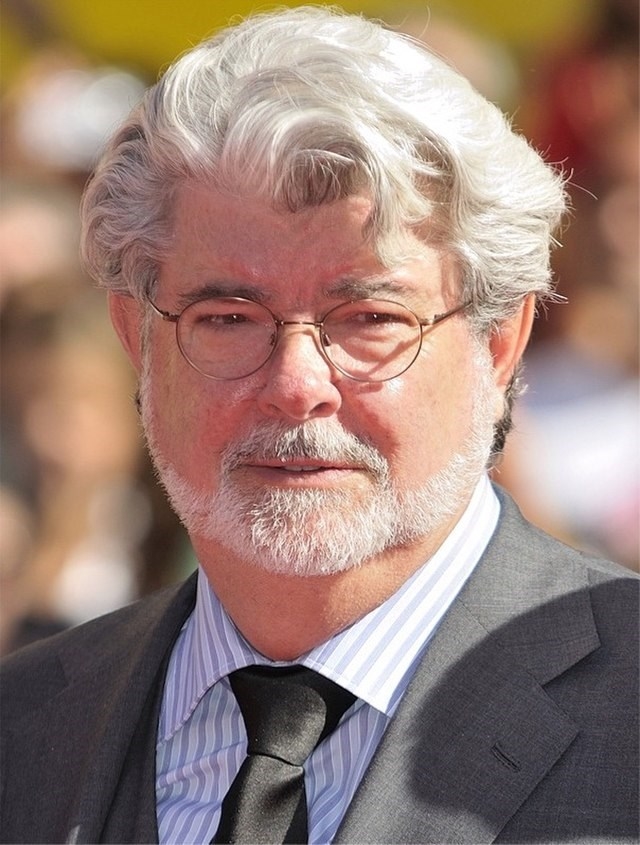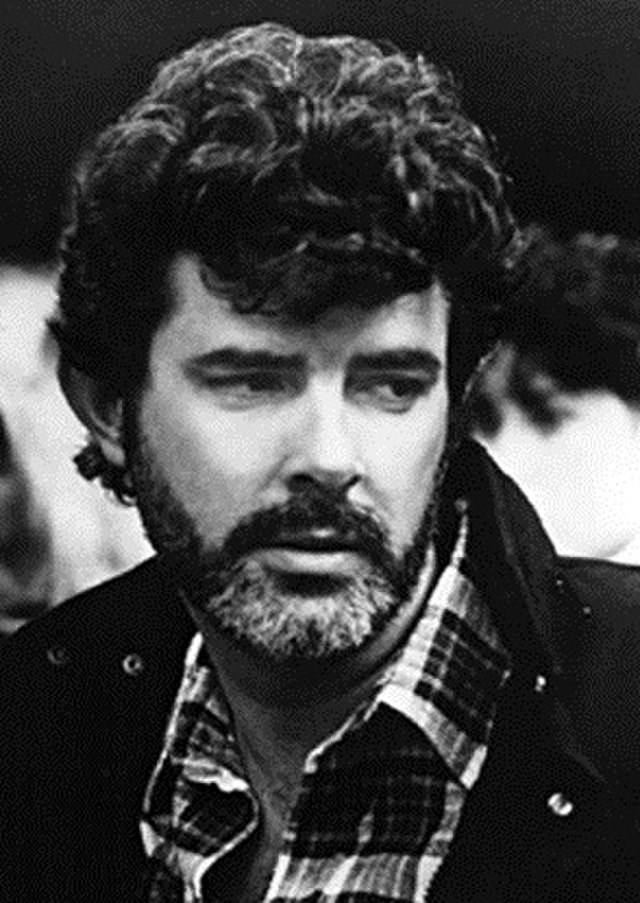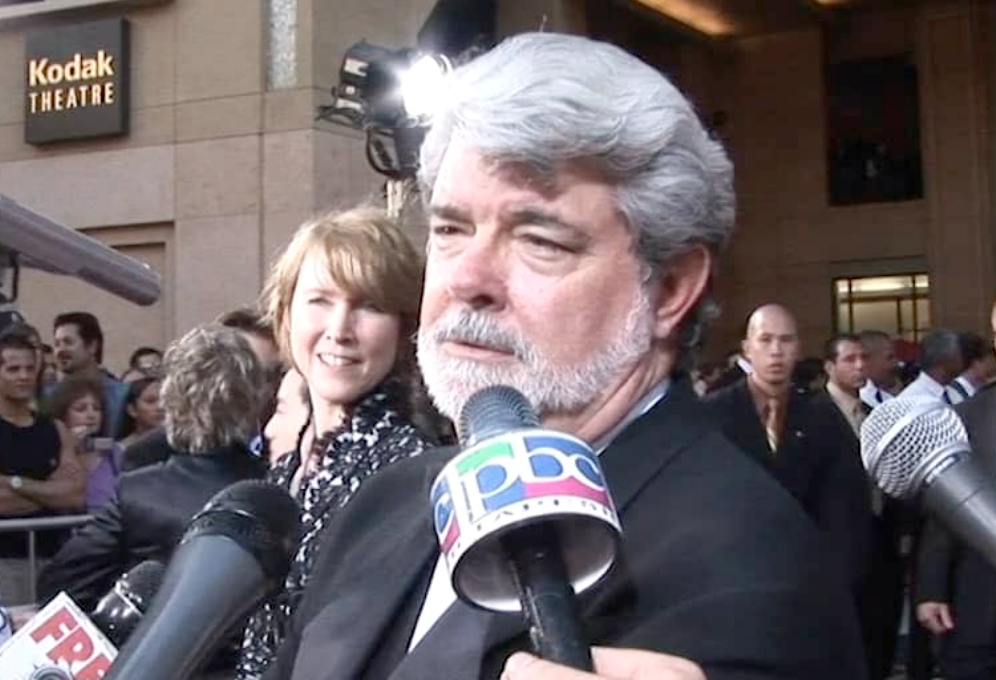 George Lucas, 2009Wikimedia Commons
George Lucas, 2009Wikimedia Commons
George Lucas is an American filmmaker, screenwriter, producer and philanthropist. Even if you do not recognize his name, it is likely you know of his work. Responsible for creating franchises such as Star Wars and Indiana Jones, Lucas is largely considered one of the most significant figures of 20th Century cinema. Most of his work has been created independent of Hollywood corporations; he founded his own production company, Lucasfilm Ltd., its subsidiary Lucasfilm Games, the special effects company Industrial Light & Magic, as well as THX, a company which ensures the quality of sound reproduction.[1] Lucas has also had many philanthropic endeavors, including his founding the George Lucas Educational Foundation and the Lucas Museum of Narrative Art, as well as several charitable donations made to various organizations and campaigns.[2]
Early Life and Education
Lucas was born in Modesto, California, to George (Sr.) and Dorothy Lucas. He was raised on a walnut ranch and was expected to begin work in his father’s stationary store once he turned eighteen. However, this was not what Lucas wanted.[3] Throughout his childhood, he expressed a strong interest in race car driving and raced throughout his high school years.[4] After a serious crash when he was just eighteen, Lucas decided against pursuing racing further.[5]
In an article for Wired, Steve Silberman details the informal beginnings of Bruce Baillie’s Canyon Cinema, a series of film screenings which toured around local coffeehouses and bars in Canyon, California in the early 1960s.[6] Silberman explains that Lucas attended some of the showings with childhood friend John Plummer, which sparked Lucas’ interest in film.[7] They began going to various film screenings and festivals, before venturing to Santa Monica to see screenings of films such as Breathless (Jean-Luc Goddard, 1960) and Jules and Jim (François Truffaut, 1962) at the New Art Cinema.[8]
By 1964, Lucas had enrolled to study film at the University of Southern California’s School of Cinematic Arts. Lucas studied alongside many now-famous fellow filmmakers, perhaps the most notable figures being Steven Spielberg and Martin Scorsese. Lucas also happened to meet esteemed filmmaker Haskell Wexler at a racecourse; he became Lucas’ first mentor in the world of film. After graduating in 1966, Lucas took a brief hiatus from education and tried to enlist as an officer for the U.S. Air Force. When this was unsuccessful, Lucas went back to USC to study film production in 1967.[9] There, he created his first short film Electronic Labyrinth: THX 1138 4EB and won first place at the 1967-68 National Student Film Festival. During his time at graduate school, Lucas earned a scholarship to work with Warner Bros., observing the making of a film of his choice; he chose Francis Ford Coppola’s Finian’s Rainbow (1968).
Filmmaking and Lucasfilm Ltd.
Lucas’ time with Coppola clearly made an impression, as the pair co-founded a studio together the following year called American Zoetrope. The second film produced by the studio was a feature-length adaptation of Lucas’ student film, called THX 1138, though the film was largely unsuccessful.[10] Undeterred this, Lucas continued to work with the company, as well as founding a production company of his own called Lucasfilm (Ltd.) shortly after in 1971.
The first film to be produced by Lucasfilm Ltd. was Lucas’ 1973 film American Graffiti, a coming-of-age film that Lucas was asked by Coppola to write.[11] The film received a nomination for Best Picture at the Academy Awards and remains one of the most profitable films ever to be made.
Despite American Graffiti’s great success, when Lucas began to pitch Star Wars, several studios turned him down. Only one, 20th Century Fox, agreed both production and distribution deals for the films, a decision that ultimately saved the studio financially after a string of unsuccessful films. Prior to shooting, Lucas was advised to increase his fee for creating the movie but declined, instead negotiating ownership of both the licensing and merchandising rights.[12] Star Wars was the highest-grossing film of all time for five years after its release in 1977 and went on (and continues) to generate millions of dollars for Lucasfilm through sales of toys, games and other merchandise connected to the franchise. Though Lucas did not direct the other two films in the original trilogy, The Empire Strikes Back (1980) and Return of the Jedi (1983) he worked on the films as the creator, executive producer and screenwriter.[13]
 Wikimedia CommonsGeorge Lucas, 1986
Wikimedia CommonsGeorge Lucas, 1986
Around the same time, Lucas began writing an adventure series centered around fictional adventurer, archaeologist, and professor, Dr. Henry Walton ‘Indiana’ Jones. When on vacation in 1977 with close friend and fellow filmmaker Steven Spielberg, Lucas heard about Spielberg’s desire to create a James Bond film. Instead, Lucas pitched his outline of the first Indiana Jones movie, Raiders of the Lost Ark.[14] Four years later, the movie was released. At the 1981 Academy Awards, Raiders of the Lost Ark was nominated in 9 categories, including Best Picture, Best Director and Best Original Score, and won in five, including the Special Achievement Academy Award. The subsequent four films in the franchise have also been successful.
In the early 1990s, Lucas began writing the Star Wars prequel trilogy. The films were released between 1999 and 2005, with Lucas having created, written the screenplay for, and directed all three of the movies.
In 2012, Lucasfilm was sold to the Walt Disney Company for four billion U.S. dollars, along with the rights to the Star Wars franchise.[15] Following the acquisition, Disney began production of the Star Wars sequel trilogy. Though Lucas had decided to take a step back, he personally selected JJ Abrams to direct the films, and the pair remained in contact throughout the process.[16]
George Lucas’ career as a filmmaker is set apart from so many others because of his working independently of existing corporations in Hollywood, instead maintaining control of his artistic visions and creating so many opportunities for others in the process.
Philanthropic Endeavors
In 1991, Lucas launched the George Lucas Educational Foundation to improve pre-K-12 education. Their website, named Edutopia, provides resources for educators, helping them to implement innovative strategies in the classroom and beyond. The foundation is built on the belief that education should provide learners with three fundamental skills:
“1. The ability to find fact-based information
2. The ability to assess the quality of information
3. The ability to creatively and effectively use information to accomplish a goal.”[17]
You can learn more about the Gorge Lucas Educational Foundation, here.
In 2013, Lucas began making plans to open a museum in San Francisco, offering to cover the construction costs of approximately $300 million, as well as gifting $400 million once the museum opened. Owing to several logistical issues including the COVID-19 outbreak, the museum’s location has changed more than once over the years and the opening date has been delayed on more than one occasion. However, construction is currently well under way, and the Lucas Museum of Narrative Art is expected to open in California in 2025.
Learn more about the museum here.
As well as investing into organizations such as the above, Lucas has made several sizable donations to various charities and causes. In 2005, he donated $1 million to the construction of the Martin Luther King Jr. Memorial in Washington D.C.. A year later, he donated $180 million to the USC film department; it remains the largest donation made to a film school. Lucas and his wife, Mellody Hobson, have also made donations to After School Matters and the Obama Foundation, as well as making a donation to New York University to aid with the creation of the Martin Scorsese Institute of Global Cinematic Arts.[18] George Lucas has also subscribed to The Giving Pledge, an organization set up by Bill Gates and Warren Buffet which oversees charitable donations from the United State’s most wealthy individuals. Lucas has promised half of his wealth to charity through the program.[19]
Lifetime Achievement Award
In 2005, Lucas was awarded the Lifetime Achievement Award by the American Film Institute; the award is “the highest honor in American cinema.”[20] On why Lucas was honored, the AFI’s website states:
“By tirelessly pushing himself and his team to previously unimaginable levels, George Lucas has redefined American cinema. Because of his incomparable work ethic, expert insight into the American Zeitgeist and extraordinary ability to craft a cultural phenomenon from his seemingly limitless imagination, the American Film Institute is honored to present George Lucas with AFI’s 33rd Life Achievement Award.”[21]
Read more about why the AFI chose Lucas as an honoree, here.
MY HERO attended the red carpet at the ceremony to ask Lucas who his heroes were. Click the image below to watch:
 George Lucas on red carpet The MY HERO Project
George Lucas on red carpet The MY HERO Project
[1] George Lucas: Creator of Star Wars. [Online] Available https://achievement.org/achiever/george-lucas/.2024.
[2] George Lucas. [Online] Available https://en.wikipedia.org/wiki/George_Lucas.2024.
[3] https://www.britannica.com/biography/George-Lucas
[4] George Lucas. [Online] Available https://en.wikipedia.org/wiki/George_Lucas.2024.
[5] Barson, Michael. George Lucas: American director, producer, and screenwriter. [Online] Available https://www.britannica.com/biography/George-Lucas.2024.
[6] Canyon Cinema. [Online] Available https://en.wikipedia.org/wiki/Canyon_Cinema.2023.
[7] Silberman, Steve. Life After Darth. [Online] Available https://www.wired.com/2005/05/lucas-2/.2005.
[8] Ibid.
[9] George Lucas. [Online] Available https://en.wikipedia.org/wiki/George_Lucas.2024.
[10] Ibid.
[11] American Graffiti. [Online] Available https://en.wikipedia.org/wiki/American_Graffiti.2024.
[12] George Lucas. [Online] Available https://en.wikipedia.org/wiki/George_Lucas.2024.
[13] List of Star Wars films. [Online] Available https://en.wikipedia.org/wiki/List_of_Star_Wars_films.2024.
[14] Indiana Jones. [Online] Available https://en.wikipedia.org/wiki/Indiana_Jones.2024.
[15] Child, Ben. Star Wars sequels: George Lucas 'constantly talking' to JJ Abrams. [Online] Available https://www.theguardian.com/film/2013/oct/09/star-wars-george-lucas-jj-abrams.2013.
[16] Ibid.
[17] About Us | Edutopia. [Online] Available https://www.edutopia.org/about.2024.
[18] George Lucas. [Online] Available https://en.wikipedia.org/wiki/George_Lucas.2024.
[19] George Lucas: Creator of Star Wars. [Online] Available https://achievement.org/achiever/george-lucas/.2024.
[20] AFI Life Achievement Award Recipients. [Online] Available https://www.afi.com/afi-life-achievement-award/.2024.
[21] George Lucas: 33th AFI Life Achievement Award Honoree. [Online] Available https://www.afi.com/laa/george-lucas/.2024.
Page created on 5/2/2024 6:28:47 PM
Last edited 5/6/2024 11:51:42 AM
, . George Lucas. [Online] Available https://en.wikipedia.org/wiki/George_Lucas.2024.
Barson, Michael. George Lucas: American director, producer, and screenwriter. [Online] Available https://www.britannica.com/biography/George-Lucas.2024.
Silberman, Steve. Life After Darth. [Online] Available https://www.wired.com/2005/05/lucas-2/.2005.
Child, Ben. Star Wars sequels: George Lucas 'constantly talking' to JJ Abrams. [Online] Available https://www.theguardian.com/film/2013/oct/09/star-wars-george-lucas-jj-abrams.2013.
, . George Lucas: 33th AFI Life Achievement Award Honoree. [Online] Available https://www.afi.com/laa/george-lucas/.2024.
